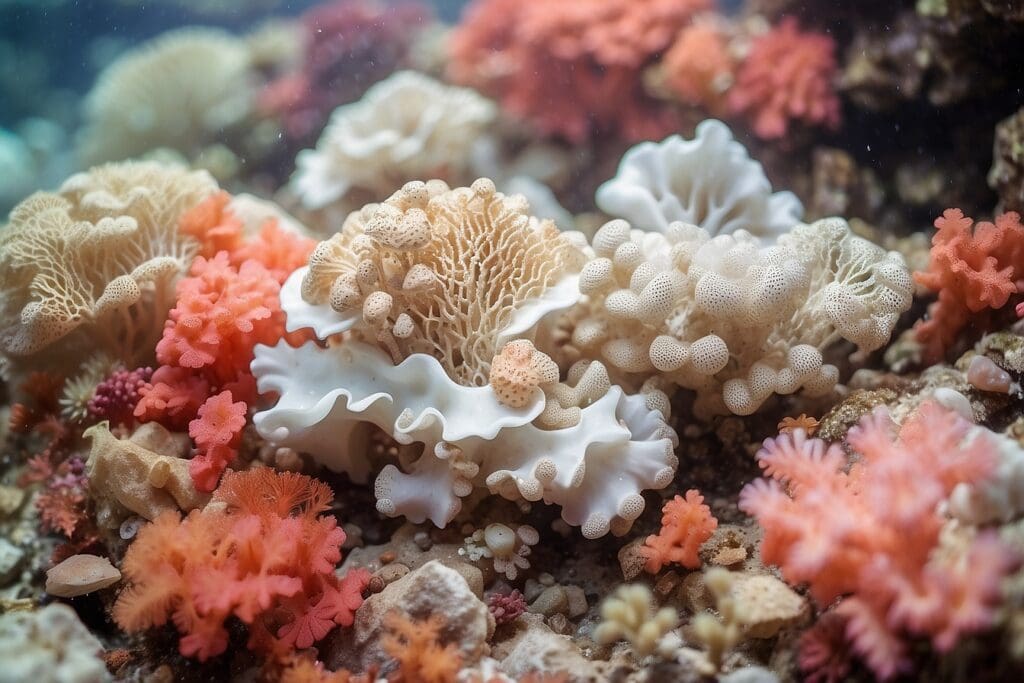It is what some scientists have called a biological “murder mystery.”1 Miles of coral reefs all over the world are losing their colors and dying off under the sea, leaving nothing but a vacant skeleton of what was once a habitat of bustling life. The cause is unknown. Some say it’s the rise in water temperatures. Others point to change in ocean salinity. The why is unclassified, but global climate change has been named the culprit by many.
The Basics of Coral
Coral is an animal. It’s often mistaken for a plant because it is immobile and well, looks like a leafless tree. Coral reefs are started by one single polyp that attaches itself to a rock on the sea floor, asexually reproduces to create thousands of clones, which create more corals that grow, grab onto other polyps, and eventually form a reef.2 And as demonstrated by say, the Great Barrier Reef, these things can get down right gigantic. Sure they cover only one percent of the ocean floor but they support a hefty quarter of all marine species.
Another misconception about coral is that they are, all on their own, comprised of fabulous bright colors. Coral is actually the color white naturally, their symbiotic algal counterpart is in fact what gives them those beautiful yellow or pink hues.3 But algae species are not just for a colorful wrapping, they use photosynthesis to convert sunlight into carbohydrates that the corals use as their source of food.4 As you may know, coral lives in tropical waters. What you may not know is that these warmers water are nutrient poor so everything that comes out of a creature then goes into another as food. So to fulfill this mutual relationship, the coral’s excrements become food for the algae.5
Coral are Sensitive Creatures
Coral bleaching began occurring in the 1980s and the array of possibilities of why extends from the grip of sensitivities coral has to its surroundings. Coral has adapted to the sea that surrounds it, so any slight change precipitates stress on the polyp. Changes in ocean salinity, temperature, solar radiation, tidal patterns, and nutrient levels all can stress out coral enough that it will actually dislodge its algal partner in search of a new species of algae that can adapt quicker to whatever change is causing the habitat disruption. However, if no better adjusted species binds to the polyps, within a few weeks to months the coral will remain bleached and die.6
The Suspects

First, warmer water changes oxygen levels because colder water can hold more oxygen than warmer waters. So even a slight change in temperature may cause coral to feel a bit choked up and stressed out. Warmer water can also be caused by increased solar radiation (more UV rays passing through the degrading atmosphere) and since algae are the photosynthesizers it affects them instead of the coral. When there is a lot of sunlight, the algae photosynthesize it too quickly, which can cause “oxygen toxicity,” which is excess oxygen inhalation that can cause tissue damage to the coral. The coral will then expel the algae because they are creating a toxic environment, but then the symbiotic relationship is lost and the coral eventually dies.7 Another factor is that the increased sunlight can disrupt the enzyme system (the system within an organism that uses proteins to increase the speed of chemical reactions within the body) of the algae and inhibit the amount of oxygen that the coral receives.8 Once again, the coral are not satisfied.
Despite the plethora of alarming evidence pointing to warming waters, scientists are not positive that they are at all or at least completely to blame. A decrease in salinity due to extensive rain water or too much runoff will also alter the chemistry of the sea enough to cause some stress. As a side note, when water warms it also expands, and this in turn causes a decrease in salinity.9 Nonetheless, nutrient change also needs to be taken into account.
In the end, most experts would point to warming waters due to global climate change as the cause, including National Oceanic and Atmospheric Administration, who keeps precise tabs on coral bleaching through a “thermal stress outlook.”10 Those same experts also say that over-fishing, pollution, and costal development are also major contributors to the death of coral.11
Are Coral Reefs Doomed?
Just because the corals let go of their first algal relationship doesn’t mean they are doomed and will not find another. It is possible for corals that have released their algae to adopt a new species and survive making a full recovery. But as humans, we need to do our part to ensure that our actions do not lead to the destruction of other species.





